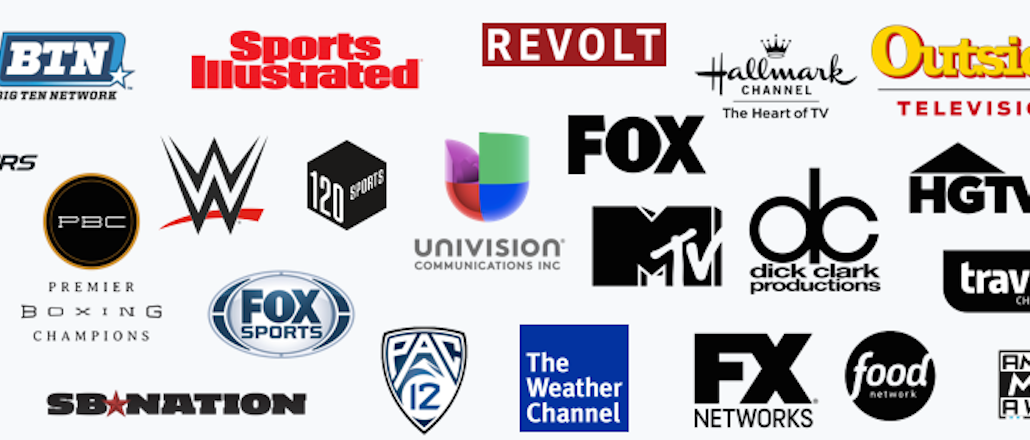Insights from CTV leaders at Dentsu, Horizon Media and more

There is one area where some top publishers and premium media companies say Twitter is beating Facebook: Video revenue sharing. To be sure, Facebook promises jaw-dropping audiences. But despite Twitter’s smaller reach it has an easy solution for them to make money by splitting pre-roll video ad revenue.
When a sports league posts game highlights or a news site posts a viral video, the content creators want a way to generate ad dollars for their efforts. Facebook is still tinkering with its revenue model, and how it divvies money among the publishing partners.
“We’re making so little from Facebook video that the finance team doesn’t even share it in the monthly reports. Twitter is a different story. It’s looking a lot better than Facebook’s ‘suggested video’ revenue,” said an executive from a top media company that works closely with both platforms on video monetization.
The mainstream media partner is making between $200,000 and $500,000 a month from Twitter ad revenue, and almost nothing from Facebook, the source said. Still, even Twitter’s revenue contribution is considered small compared to owned channels.
Since last year, Twitter has run pre-roll video ads in a revenue-sharing program called Amplify that it offers select partners. Pre-roll ads play before videos and the money is split between Twitter and the content owner. For example, commercials show up ahead of game-day tweets from the National Football League and National Basketball Association.
Premium publishers like NowThis, BBC, Mashable and others are in the program. Twitter recently increased the length of pre-roll video ads from six seconds to unlimited, giving advertisers more flexibility, and it introduced a skip button, giving users more flexibility.
Facebook’s first big money-making program was “suggested videos,” where users scroll through premium videos and publishers get a cut from any sponsored videos sold into the feed.
“We’re making virtually nothing from Facebook’s suggested video platform, which is all revenue-share based. I’m not sure if users aren’t adopting it, preferring to watch in-feed, or advertisers aren’t buying,” said another executive from a premium publishing partner that works with both Facebook and Twitter.
Facebook did recently change rules so publishers could post branded videos to their pages, allowing them to sell hybrid ad-entertainment content and theoretically monetize all videos they post. Facebook also is considering a more formal ad unit that could sell right into videos, especially live ones, giving the digital broadcasters a more predictable revenue stream.
There is a sense among publishers that Facebook will eventually find the right formula to monetize video, much as it did for mobile ads.
Yet Facebook CEO Mark Zuckerberg is personally opposed to an easy answer like pre-roll videos, which he considers a terrible user experience. That aversion to pre-roll means that Twitter may have an early advantage since it adopted the format, but over time Facebook could get the industry to adjust its habits.
“Advertisers are used to buying TV, and used to buying ads, in a particular way right now. So there’s lots of budgets out there for buying pre-roll, and that doesn’t change overnight,” said Jonathan Wilner, vp of product and strategy at video technology firm Ooyala. “But if advertisers are interested in reaching gigantic audiences, then Facebook will make them change their systems.”
Not all publishers are down on Facebook’s suggested video, though. For instance, it seems to be a natural fit for NowThis, which posts high volumes of highly trafficked news roundups. The scale of the video operation can make pennies per view add up. NowThis claims it does 1.6 billion video views across all its digital channels, including Facebook and Twitter, monthly.
Facebook is where NowThis gets most of its views. “We’re happy with Twitter as one more distribution point for us, but it’s no surprise the scale is not the same,” said Athan Stephanopoulos, president at NowThis. “There’s a correlation between view and revenue opportunity.”
More in Media

Digiday+ Research: Publishers pull back their dependence on digital revenue
After a year in which publishers shifted their revenue dependence away from traditional channels and toward digital channels, 2025 has seen a shift back toward more of a balance between traditional and digital revenue sources.

LinkedIn makes it easier for creators to track performance across platforms
Creator data is becoming more accessible to third-party vendors via a new API — another step in LinkedIn’s creator platform evolution.

Ad Tech Briefing: The ‘plumbers’ posing as the unlikely saviors of the internet
After several false dawns, can Cloudflare’s ‘anti-AI scraping tool’ finally offer publishers a road to commercial redemption?





